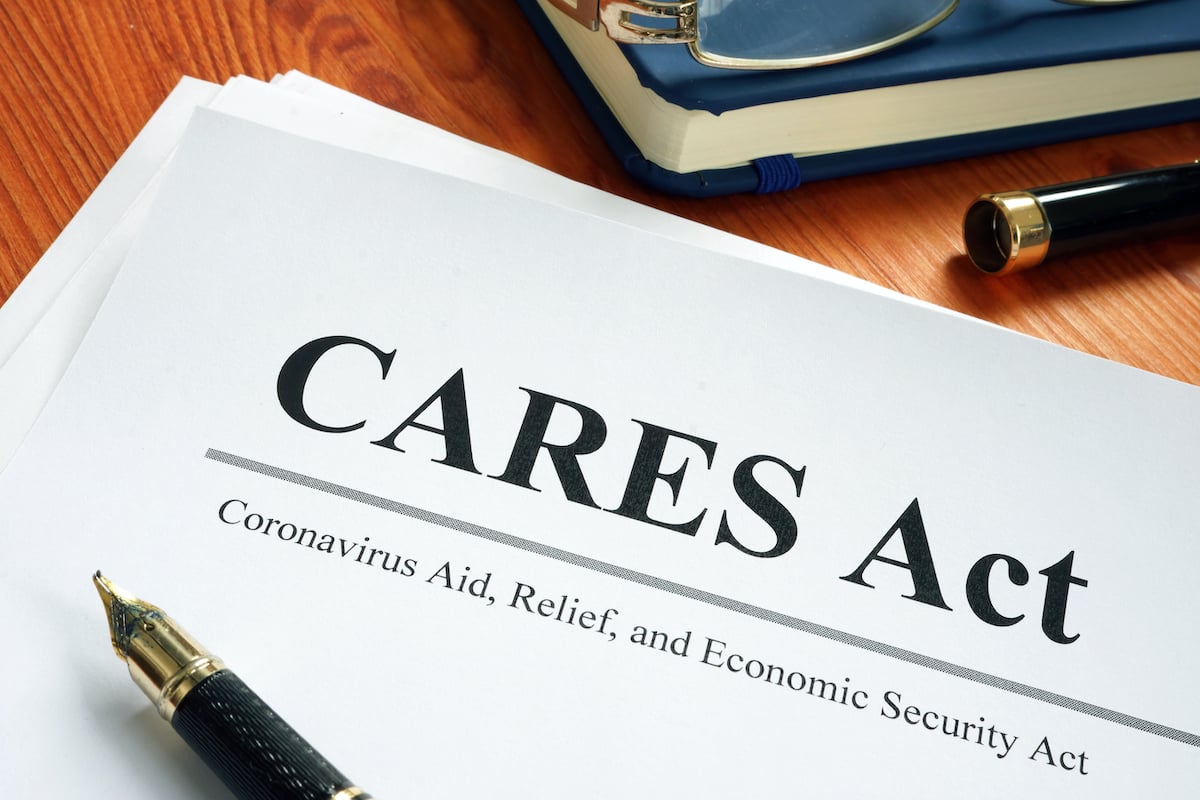This won’t be the first or the last blog post to discuss the major financial impact the COVID-19 pandemic has had on the U.S. economy. CEOs, business owners, and everyday people have been impacted by a loss of income, temporary layoffs, and more.
In response, a massive emergency funding bill—the Coronavirus Aid, Relief, and Economic Security (CARES) Act—went into effect, including changes that will impact how retirees approach retirement income, how they use their IRAs, 401(k)s, Social Security, and more. Read on for a breakdown of the biggest changes.
Required Minimum Distributions
One of the most significant retirement-related changes to the CARES Act was suspending all required minimum distributions, or RMDs, from retirement accounts. In other words, RMDs will not be required for 2020.
Which retirement accounts does this apply to?
The change suspends RMDs from 401(k)s, inherited retirement accounts, & 403(b)s.
Can an RMD roll into another eligible plan?
Yes. If an RMD was taken, it can roll into another eligible retirement plan and won’t be counted as part of the once-a-year limitation.
What does this mean for me?
The biggest impact waiving RMDs for 2020 has on retirees is that they can now leave their retirement accounts alone for another year. As the economy continues to ebb and flow, many retirement accounts may see a decline in value, as compared to 2019.
401(k) Loans
Historically, many 401(k) plans and other contribution plans allowed you to take out a plan loan of up to $50,000, or half your vested account balance. These loans are typically paid back over the course of five years through payroll deductions.
What did the CARES Act change?
The CARES Act changed two major things: First, qualified individuals can now borrow up to 100% of your vested account balance—or $100,000, whichever is less. Keep in mind, this only applies to loans made from March 27 to Sept. 23, 2020. And, not all plans allow participant loans. This decision is made on a person-by-person basis.
Secondly, as long as 2020 was one of the five years for their outstanding loan repayment, repayments on your outstanding loan balances between March 27 and Dec. 31, 2020 can now be delayed for up to one year.
What does this mean for me?
Not only can you now borrow more money with more time to pay it back, but by giving you additional time to pay back a 401(k) loan, that money won’t be taken out of your paycheck, which means more cash flow and more pay for the rest of the year.
COVID-related Distribution Exception
Among COVID’s many impacts on businesses this year, the CARES Act provides a distribution for an individual or their spouse who gets diagnosed with COVID-19, or who experiences adverse financial impacts caused by COVID-19. This could be a layoff, reduced hours, furlough, or being quarantined.
Is the entire distribution taxable in 2020?
You can choose to treat the entire distribution as taxable in 2020. Otherwise, the distribution will be automatically spread across the next three tax years.
Where does the distribution come from?
The distribution can come from an eligible retirement plan. You can repay your COVID-19-related distribution for up to three years after the day it’s distributed. Repayment can also rollover in 2020, in which case you may need to file an amended tax return for 2020.
Is there a distribution penalty?
The 10% penalty you may be thinking of will be waived for distributions up to $100,000 or 100% vested balance. The distribution will be taxed over three years, and 20% federal tax withholding doesn’t apply. The loan can be repaid over the course of three years without counting toward your maximum contribution limits.
What does this mean for me?
This can open up a large distribution from IRAs, which normally don’t allow loans. As people continue to get laid off or experience a loss of income due to the changing economy, they can now tap their retirement accounts without penalty.
Charitable Giving
The most significant impacts the CARES Act has on charitable giving include:
- You can deduct up to $300 of cash distributions as above-the-line deductions
- The CARES Act waives 605 of AGI limit for cash donations, now up to 100%
- Corporate charitable contributions limit increased to 25% of taxable income
- The limit on food contributions increased from 15% to 25% of taxable income
What does this mean for me?
You may choose to withhold from giving a Qualified Charitable Distribution (QCD) in 2020, if they want to offset RMDs. Or, you may decide that 2021 is a better time.
Your CARES Act Questions, Answered
The COVID-19 pandemic seems to have impacted just about everything, and that includes retirement plans. As you iron out the details, turn to a trusted provider to help you make sense of the right financial move for your future. Whether you have questions about RMDs, 401(k) loans, COVID-related distribution or QCDs, we’ve got answers.



